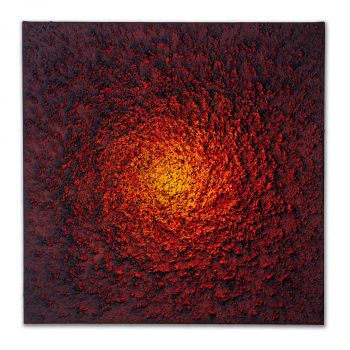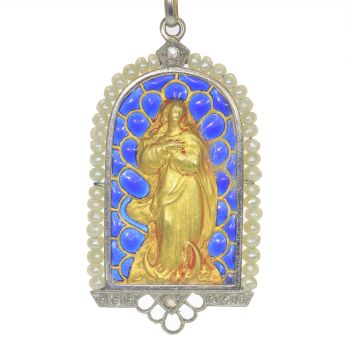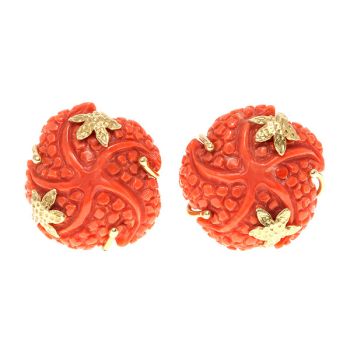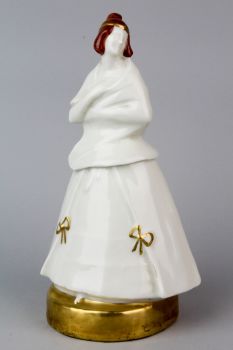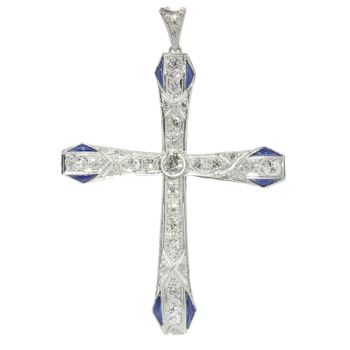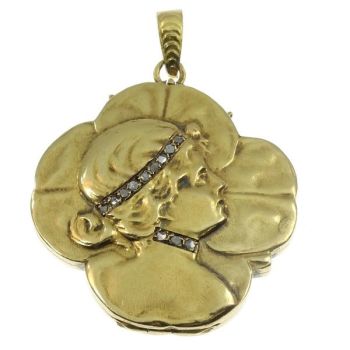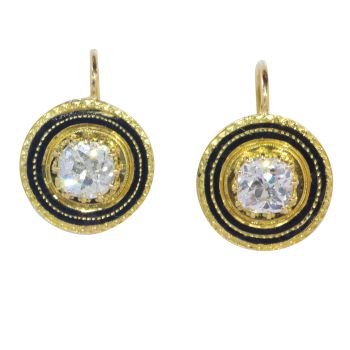Deco Delight: Exquisite Craftsmanship in an 11 millimetre Miniature Smoking Pipe Charm 1920
Artista Desconocido
DiamanteRubíPiedra preciosaPlatino
€ 1.100
Adin Fine Antique Jewellery
- Sobre la obra de arte
A splendid example of Art Deco elegance, this charming vintage pendant takes the form of a smoking pipe, meticulously crafted from 18K yellow gold and platinum, circa 1920. Adorned with six natural rose cut diamonds and a vibrant ruby, its miniaturestature and the exceptional craftsmanship evident on both the front and back sides exude a sense of admiration and delight. This piece not only encapsulates the era's penchant for abstract motifs and geometric forms but also showcases an exquisiteattention to detail, making it a timeless treasure that brings joy and whimsy to its beholder.
Antique jewelry object group
Deco Delight: Exquisite Craftsmanship in an 11 millimetre Miniature Smoking Pipe Charm
Condition
very good condition
more info on our condition scale
Country of origin
unknown
Style
Art Deco - Art Deco is an eclectic artistic and design style which had its origins in Paris in the first decades of the 20th century. The style originated in the 1920s and continued to be employed until after World War II. The term "art deco" first sawwide use after an exhibition in 1966, referring to the 1925 Exposition Internationale des Arts Décoratifs et Industriels Modernes that was the culmination of high-end style modern in Paris. Led by the best designers in the decorative arts such asfashion, and interior design, Art Deco affected all areas of design throughout the 1920s and 1930s, including architecture and industrial design, as well as the visual arts such as painting, the graphic arts and film. At the time, this style was seen aselegant, glamorous, functional and modern.
See also: Art Deco
more info on styles
Style specifics
Abstract motives and geometrical forms are quite typical for the Art Deco period. Art Deco moved away from the soft pastels and organic forms of its style predecessor, Art Nouveau, and embraced influences from many different styles and movements of the early 20th century, including Neoclassical, Constructivism, Cubism, Modernism,and Futurism. Its popularity peaked in Europe during the Roaring Twenties and continued strongly in the United States through the 1930s. Although many design movements have political or philosophical roots or intentions, Art Deco was purelydecorative.
Period
ca. 1920
Events & facts of this era, poetry of this era, fashion of this era.
Theme
smoking pipe
Material
18K yellow gold and platinum (touchstone tested)
more info on precious metals
Extra information
During this era, jewellery crafted in yellow or red gold often featured diamonds set within a slender plate of platinum, elegantly integrated into the gold foundation of the piece. This method is similarly employed in this jewel.
Diamonds
Six rose cut diamonds. We do not have the weight of the diamonds which is normal in our trade when it comes to rose cuts.
All diamonds we offer are screened by the I.J.G.C. for whether they are natural or synthetic, and all diamonds in this jewel are 100% guaranteed to be natural.
Precious stones
One ruby. We did not check if the ruby is lab produced or not as this information has no influence on the value of this jewel. Natural rubies and lab produced rubies were both used in this era, rather more for their effect than for their intrinsic value.
Birthstones
Diamond is the birthstone (or month stone) for April and ruby for July.
more info on birthstones
Hallmarks
No trace.
more info on hallmarks
Dimensions
total height 2,74 cm (1,08 inch), width pipe 1,15 cm (0,45 inch)
see picture with a ruler in millimeters and inches
Weight
1,90 gram (1,22 dwt)
Adin Reference Nº
24030-0369
Copyright photography
Adin, fine antique jewellery
Additional information
our latest acquisitions
jewelry glossary
wall of fame
visit us in Antwerp
subscribe to our mailinglist
- Sobre el artista
Puede suceder que un artista o creador sea desconocido.
Algunas obras no deben determinarse por quién está hecho o por (un grupo de) artesanos. Algunos ejemplos son estatuas de la Antigüedad, muebles, espejos o firmas que no son claras o legibles, pero también algunas obras no están firmadas en absoluto.
También puedes encontrar la siguiente descripción:
•"Atribuido a …." En su opinión, probablemente una obra del artista, al menos en parte.
•“Estudio de….” o “Taller de” En su opinión, una obra ejecutada en el estudio o taller del artista, posiblemente bajo su supervisión
•“Círculo de…” En su opinión, una obra del período del artista que muestra su influencia, estrechamente asociado con el artista pero no necesariamente su alumno.
•"Estilo de …." o “Seguidor de…”. En su opinión, una obra ejecutada al estilo del artista pero no necesariamente por un alumno; puede ser contemporáneo o casi contemporáneo
•"Manera de …." En su opinión una obra al estilo del artista pero de fecha posterior
•"Después …." En su opinión, una copia (de cualquier fecha) de una obra del artista
•“Firmado…”, “Fechado…” o “Inscrito” En su opinión, la obra ha sido firmada/fechada/inscrita por el artista. La adición de un signo de interrogación indica un elemento de duda.
•“Con firma…”, “Con fecha…”, “Con inscripción…” o “Lleva firma/fecha/inscripción” en su opinión la firma/fecha/inscripción ha sido añadida por alguien que no es el artista
¿Está interesado en comprar esta obra de arte?
Artwork details
Related artworks
- 1 - 4 / 12
- 1 - 4 / 24
- 1 - 4 / 24
- 1 - 4 / 24
- 1 - 4 / 12








